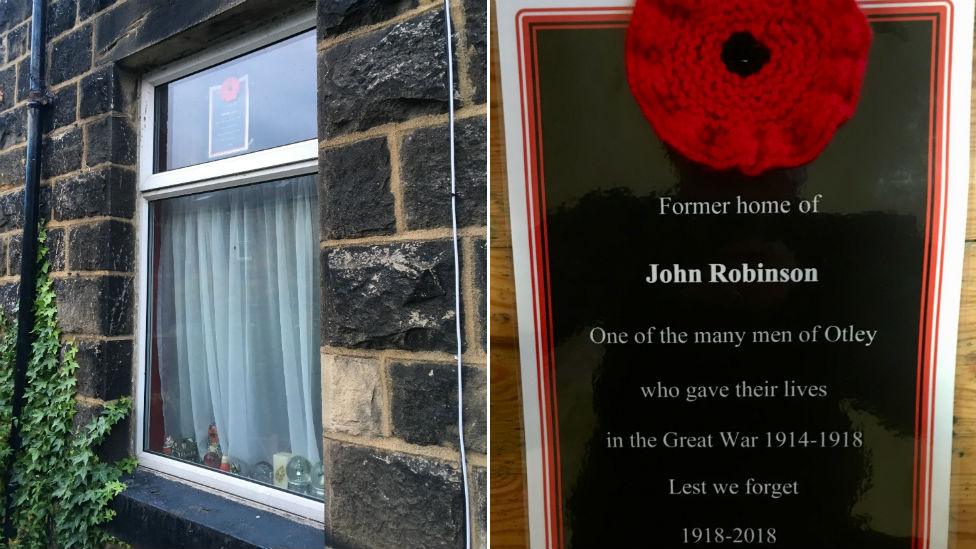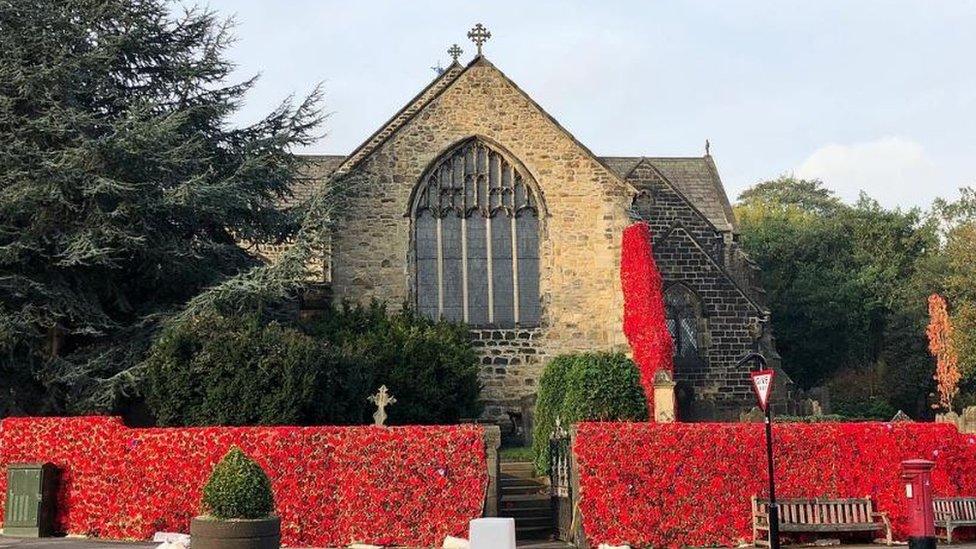World War One: Homes of Otley men who died at war to display knitted poppies
- Published

Otley has many original Victorian terraces where the town's fallen once lived
More than 100 houses, in a West Yorkshire town, that were home to men who served in World War One are displaying posters for Armistice Day.
People living in the homes of the men who never returned have been asked to display a poster in their window in honour of the person who lived there.
The project was the idea of volunteers at Otley Museum.
Each house will also display a knitted poppy, like the 16,000 installed on the exterior of All Saints Parish Church.
The church's knitting group decided to knit one poppy for each of the town's 14,000 residents to make a poppy cascade. It was so popular they ended up with a surplus of a few thousand woollen poppies.
Councillor Roy Georgeson said he had accompanied museum volunteers to ask people in the chosen houses to display a poster and poppy, and everyone they had approached had agreed to take part.

The poppy cascade in Otley was the idea of the church knitting group
"We knocked on the doors of all the identified houses and said did you know that this was the home of a veteran who didn't return, and all of them said yes we will put it up," he said.
"It acts as a simple reminder of the extent of the loss in a small town, and these were the men who lived where we live, they lived on our streets."
One of the posters is displayed at the home of Otley ambassador and former MP Greg Mulholland, who lives on Hamilton Terrace.
"When I found out my house was on the list, I was really moved and felt something quite profound that all those years ago, the man of the house had left to fight and never came back.
"To remind people that these were the houses where the men lived, it's very, very powerful."
Mr Mulholland wrote a song with his band Summercross about the town's Albion Street, where nine men died in the war.
He said: "To walk down and see nine posters up in a street of 100 houses, it really brings home the sacrifice they made."
Events are taking place across the country to mark the 100th anniversary of the end of World War One.

The Armistice 100 years on

Long read: The forgotten female soldier on the forgotten frontline
Video: War footage brought alive in colour
Interactive:, external What would you have done between 1914 and 1918?
Living history: Why 'indecent' Armistice Day parties ended
